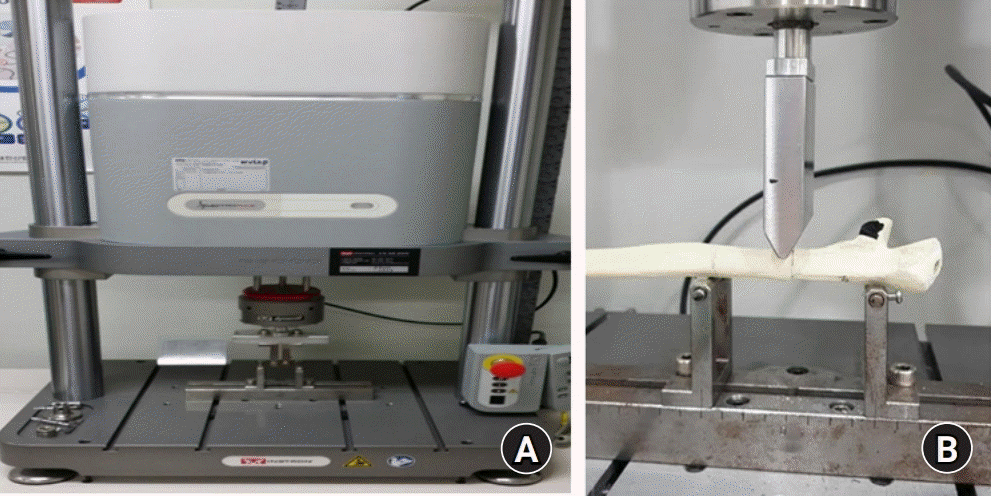1. Sauder DJ, Athwal GS. Management of isolated ulnar shaft fractures. Hand Clin. 2007; 23:179–84.

2. Sarmiento A, Latta LL, Zych G, McKeever P, Zagorski JP. Isolated ulnar shaft fractures treated with functional braces. J Orthop Trauma. 1998; 12:420–4.

3. Corea JR, Brakenbury PH, Blakemore ME. The treatment of isolated fractures of the ulnar shaft in adults. Injury. 1981; 12:365–70.

4. Brakenbury PH, Corea JR, Blakemore ME. Non-union of the isolated fracture of the ulnar shaft in adults. Injury. 1981; 12:371–5.

5. Anderson LD, Sisk D, Tooms RE, Park WI 3rd. Compression-plate fixation in acute diaphyseal fractures of the radius and ulna. J Bone Joint Surg Am. 1975; 57:287–97.

6. Chapman MW, Gordon JE, Zissimos AG. Compression-plate fixation of acute fractures of the diaphyses of the radius and ulna. J Bone Joint Surg Am. 1989; 71:159–69.

7. Hadden WA, Reschauer R, Seggl W. Results of AO plate fixation of forearm shaft fractures in adults. Injury. 1983; 15:44–52.

8. Müller ME, Allgöwer M, Willenegger H. Technique of internal fixation of fractures. NewYork: Springer;1965.

9. Saikia K, Bhuyan S, Bhattacharya T, Borgohain M, Jitesh P, Ahmed F. Internal fixation of fractures of both bones forearm: comparison of locked compression and limited contact dynamic compression plate. Indian J Orthop. 2011; 45:417–21.

10. Lee YH, Lee SK, Chung MS, Baek GH, Gong HS, Kim KH. Interlocking contoured intramedullary nail fixation for selected diaphyseal fractures of the forearm in adults. J Bone Joint Surg Am. 2008; 90:1891–8.

11. Moss JP, Bynum DK. Diaphyseal fractures of the radius and ulna in adults. Hand Clin. 2007; 23:143–51.

12. Droll KP, Perna P, Potter J, Harniman E, Schemitsch EH, McKee MD. Outcomes following plate fixation of fractures of both bones of the forearm in adults. J Bone Joint Surg Am. 2007; 89:2619–24.

13. Kim SB, Heo YM, Yi JW, Lee JB, Lim BG. Shaft fractures of both forearm bones: the outcomes of surgical treatment with plating only and combined plating and intramedullary nailing. Clin Orthop Surg. 2015; 7:282–90.

14.
R Sixto Jr
JA Kortenbach
S Avuthu
M Wich
R Sanders
S Steinmann
. DePuy Products, Inc, assignee. Fracture fixation plate for the olecranon of the proximal ulna patent. United States patent US8182517B2. 2012 May 22.
15. Siebenlist S, Buchholz A, Braun KF. Fractures of the proximal ulna: current concepts in surgical management. EFORT Open Rev. 2019; 4:1–9.

16. Ozkaya U, Kiliç A, Ozdoğan U, Beng K, Kabukçuoğlu Y. Comparison between locked intramedullary nailing and plate osteosynthesis in the management of adult forearm fractures. Acta Orthop Traumatol Turc. 2009; 43:14–20.

17. Rand JA, An KN, Chao EY, Kelly PJ. A comparison of the effect of open intramedullary nailing and compression-plate fixation on fracture-site blood flow and fracture union. J Bone Joint Surg Am. 1981; 63:427–42.

18. Gao H, Luo CF, Zhang CQ, Shi HP, Fan CY, Zen BF. Internal fixation of diaphyseal fractures of the forearm by interlocking intramedullary nail: short-term results in eighteen patients. J Orthop Trauma. 2005; 19:384–91.
19. Weckbach A, Blattert TR, Weisser Ch. Interlocking nailing of forearm fractures. Arch Orthop Trauma Surg. 2006; 126:309–15.

20. Lee S, Lee HS, Sung YB, Yum JK. Interlocking intramedullary nailing of forearm shaft fractures in adults. J Korean Fract Soc. 2009; 22:30–8.

21. Oh JR, Kim DS, Yeom JS, Kang SK, Kim YT. A comparative study of tensile strength of three operative fixation techniques for metacarpal shaft fractures in adults: a cadaver study. Clin Orthop Surg. 2019; 11:120–5.

22. Oh JR, Park J. Intramedullary stabilization technique using headless compression screws for distal ulnar fractures. Clin Orthop Surg. 2020; 12:130–4.

23. Wadsworth TG. Screw fixation of the olecranon after fracture or osteotomy. Clin Orthop Relat Res. 1976; (119):197–201.

24. Johnson RP, Roetker A, Schwab JP. Olecranon fractures treated with AO screw and tension bands. Orthopedics. 1986; 9:66–8.

25. Hong CC, Han F, Decruz J, Pannirselvam V, Murphy D. Intramedullary compression device for proximal ulna fracture. Singapore Med J. 2015; 56:e17–20.

26. DeKeyser GJ, Kellam PJ, Haller JM. Locked plating and advanced augmentation techniques in osteoporotic fractures. Orthop Clin North Am. 2019; 50:159–69.

27. Cornell CN. Internal fracture fixation in patients with osteoporosis. J Am Acad Orthop Surg. 2003; 11:109–19.

28. Hopf JC, Nowak TE, Mehler D, Arand C, Gruszka D, Rommens PM. Nailing of proximal ulna fractures: biomechanical comparison of a new locked nail with angular stable plating. Eur J Trauma Emerg Surg. 2019; Nov. 1. [Epub].
https://doi.org/10.1007/s00068-019-01254-7.

29. Hazel A, Nemeth N, Bindra R. Anatomic considerations for plating of the distal ulna. J Wrist Surg. 2015; 4:188–93.




 PDF
PDF Citation
Citation Print
Print






 XML Download
XML Download